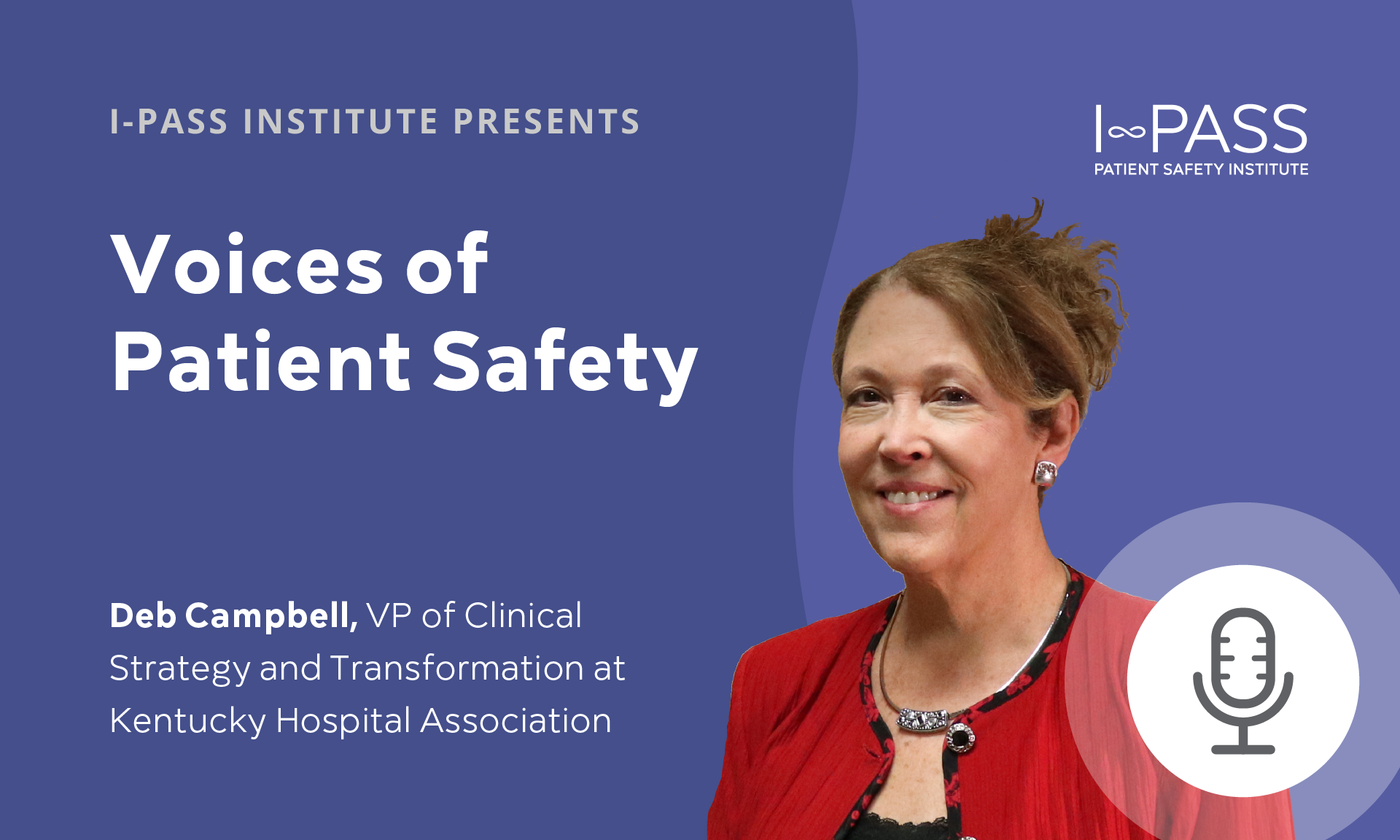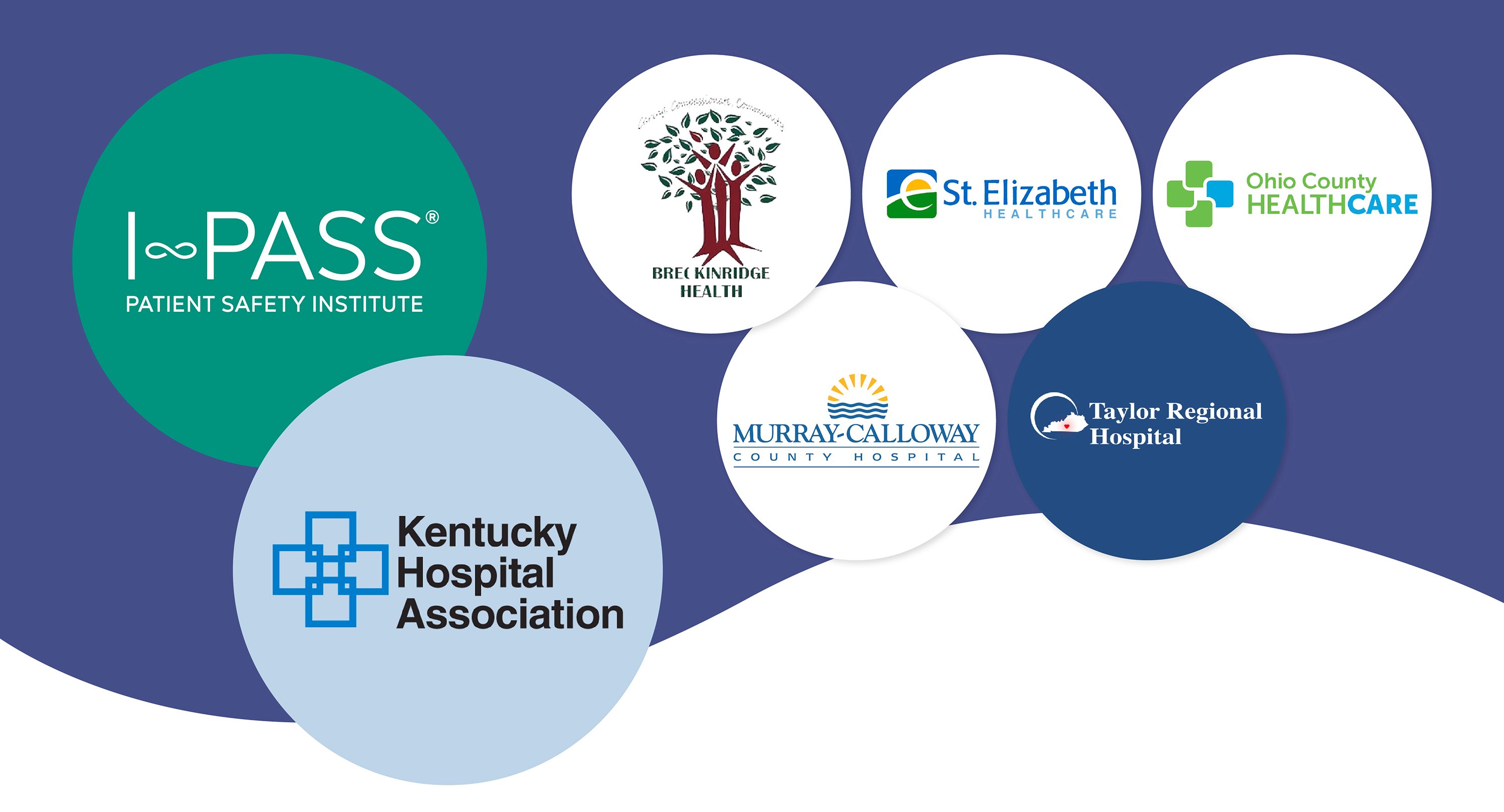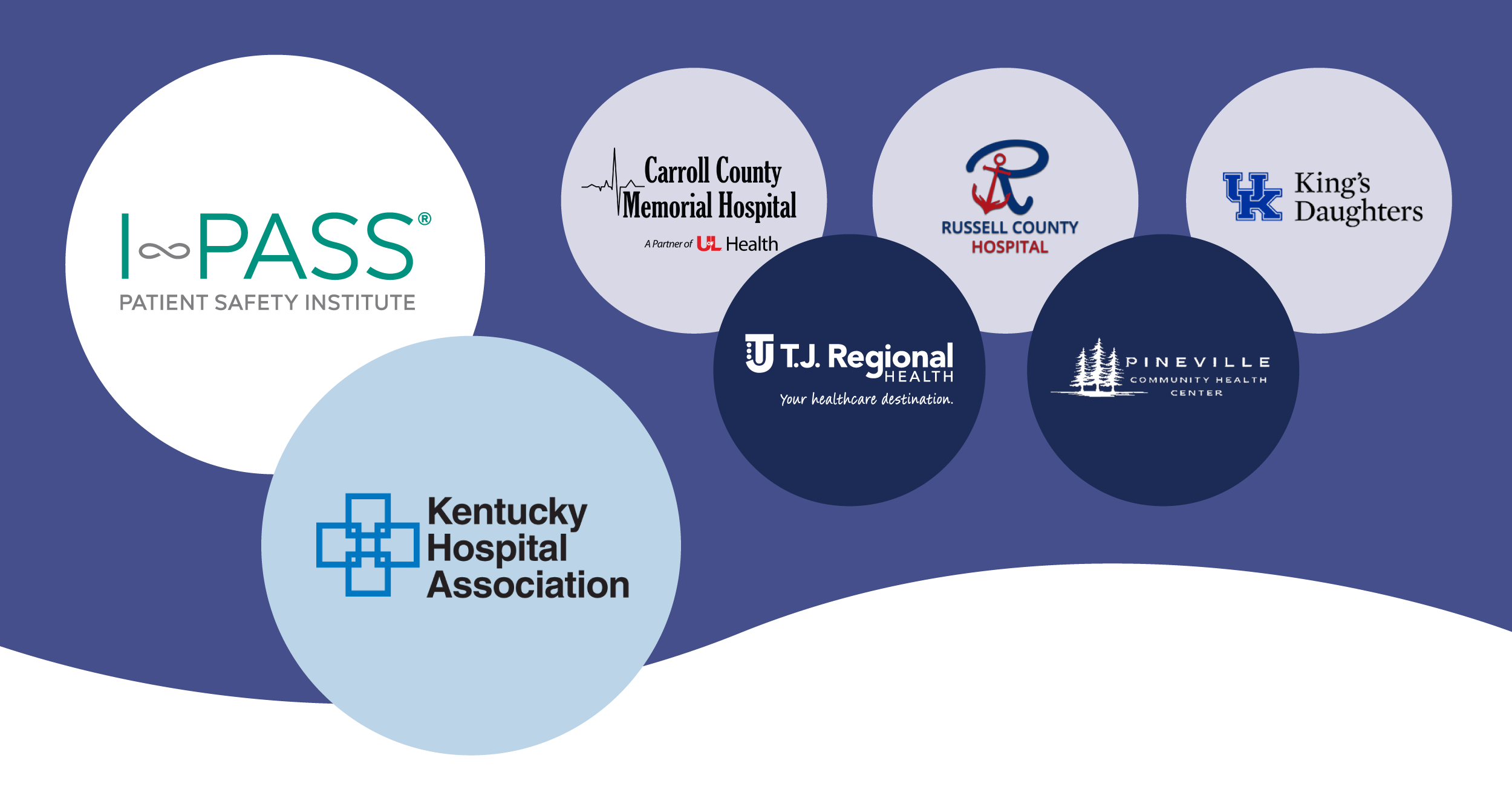We’re thrilled to launch “Voices of Patient Safety,” an interview series inviting recognized leaders in clinical care, quality, risk, and patient safety to share bold strategies and thought-provoking perspectives on reducing patient harm across the healthcare industry. Our first guest, Deb Campbell, Vice President of Clinical Strategy and Transformation at the Kentucky Hospital Association (KHA), is passionate about driving systemic change in healthcare. In fact, she’s committed to driving clinical quality improvements not just at an organizational level, but across an entire state.
For this edition of Voices of Patient Safety, we sat down with Deb Campbell, Vice President of Clinical Strategy and Transformation at the Kentucky Hospital Association (KHA). I-PASS recently announced an industry-leading partnership with KHA through the organization’s Kentucky Hospital Association Transitions and Communication in Hospitals (KHATCH) Program. As a champion for I-PASS, Deb is thrilled to provide KHA members with funded access to a valid, reliable tool for improving patient safety and establishing a universal language for care transitions between institutions across the Commonwealth.
Tell us about your professional background. When did you make the shift from the clinical side to the business side of healthcare?
After practicing as a pediatric bedside nurse for many years, I became the director of the pediatric ICU at the Children’s Hospital in Louisville. As a nurse leader, I wore lots of hats, but I gravitated toward quality improvement and developed a theory about it; people often say perfect is the enemy of good, but I think good is the enemy of better. At the hospital, I noticed people that were content with their quality performance if they were doing a “good job” or performing slightly above average. However, that mindset was paralyzing for improvement. When I saw this happening locally, I decided to get involved nationally. Over time, I began to do some consulting work for the Kentucky Hospital Association (KHA) and eventually was hired as the quality improvement specialist.
Our goal is to be a national leader in quality. During the COVID-19 pandemic, the KHA went through an evolution. We became more focused on the quality improvement (QI) work we were doing with, and to support, our members, out of which developed the Vice President of Quality position. I gladly accepted as it aligned my strengths, experience, and passions. Since then, we’ve increasingly become more strategic with our quality initiatives, and more proactively support our member hospitals to identify and pursue critical quality improvements which drive total quality. While we were always focused on quality and safety, our entire organization is now aligned around safety as a top priority.
What was your aha moment for seeking a solution for structured handoff communication?
As an industry, we’ve all been talking about communication failure for years. Then The Joint Commission released the list of sentinel events with their root causes, and communication breakdowns were the leading cause of sentinel events. For me, this was the tip of the iceberg. When you think about the magnitude of this problem—a 500-bed hospital averages 1.4 million handoffs per year—it was amazing to me the imbalance between our universal recognition of the risks posed by that handoff communication, and the enormous variability in how it is done across caregiver health systems, hospitals, units and even between individual care providers.
I couldn’t just keep preaching about communication failures. I was focused on building the QI army. Since this was my vision, I had a lot of things going on—we were doing Certifications in Healthcare Quality, QI leadership courses, and charge nurse training for quality. But even with a big team, it wasn’t possible to do all the quality work needed for Kentucky hospitals. When I found I-PASS, I realized that we could build it into our system and offer it to everyone, and it’s a validated, evidence-based method that’s sustainable. My aha moment was realizing that I-PASS will have such a broad impact on improving all types of communication, even beyond the handoff, because of the principles embedded within it like two-way communication, a shared mental model, and contingency planning, for example.
How did you first learn about I-PASS?
I’m always looking for new things to help our member hospitals solve their problems. I received an email about the I-PASS Handoff Bundle and having already been familiar with I-PASS as an acronym, it sparked my interest. My initial reaction was that I-PASS could have a positive impact on KHA hospitals and that they would likely want to learn more. Chris Landrigan, I-PASS Cofounder, and Marshall Burkhart, Vice President, Client Engagement, did a webinar for our member hospitals. This was also around the time I heard from a couple of hospitals that spoke up about needing to improve their quality and patient safety. I liked I-PASS because it’s a Swiss Army knife approach – demonstrated ability to positively impact safety, quality, experience for care providers and patients, as well as financial benefits – not another one-off solution like we’ve tried before. Communication is nuanced and complex, and I liked that the I-PASS Institute acknowledged that and thoughtfully factored it into their bundle of solutions and methodology.
Who was involved in the decision to implement I-PASS?
There was a period of selling up front because of the financial investment. I focused on the fact that I-PASS was different from other things we’ve tried and will have a bigger impact. The legal team recognized that I-PASS could potentially help prevent lawsuits. Also, our pride in Kentucky and wanting to lead an initiative was part of the selling point. We use “One Powerful Voice” for our advocacy work, suggesting that if we all speak together, we can improve our hospitals and our healthcare system. I-PASS supports this by being one powerful voice for safety, so it fit naturally with this motto. Ultimately, the leadership team and our board realized the broad, meaningful impact this could have across the commonwealth and made the decision to move forward and underwrite the costs of I-PASS on behalf of our member hospitals and health systems.
Prior to I-PASS, had you done other quality-focused implementations across the KHA system?
We implemented tools specifically for infection preventionists or quality improvement staff or physicians. This is the first implementation of this magnitude; it will impact everyone who’s patient facing. Of course, the implementation process will take time and effort, as well as energy and buy-in from staff, and we’re confident that removing the financial barrier for our members will encourage the broad adoption, helping to lead to better outcomes for all stakeholders: patients, caregivers, and the health systems.
Is there anything you’ve learned from other implementations that you are going to take in as a best practice?
To succeed, we need to have an infrastructure in place that allows us to follow up with people after I-PASS implementation. We’re going to hardwire touch points from leadership and audit staff who are using it. In the past, I’ve had to create a plan for monitoring—who does it, how often, and so on—and then send emails and make calls to check in. That’s one of the beauties of I-PASS: their team is taking care of that aspect. There’s already a structure in place to teach the hospitals, monitor users, and follow through with them. This makes it worth the investment and allows us at KHA to focus on finding the success stories, lessons learned and sharing those with other members who are interested to help improve their experience and outcomes. We’re excited that we can defer the operational aspects to the I-PASS coaches and program managers, and focus on making this partnership a national model for other hospital associations to consider and hopefully follow suit.
What is different about I-PASS?
It answers the question that we’re all asking: “How do we create a safer environment?” And it’s more inclusive of the whole team that’s taking care of patients; it’s for physicians, nurses, nurse’s aides, etc. Most importantly, it’s the fact that it provides a structure, and that structure has been proven useful for improving outcomes.
From your perspective, why is it important for states to standardize care processes like handoffs across different hospitals? Additionally, what are your thoughts on the need for broader national standardization in care processes?
Initially, I thought about I-PASS the way that I had always thought about improvement efforts: it helps each hospital improve its own delivery of safe, patient centered care. But what struck me during the pandemic is the beauty of having something that transcends the individual hospitals’ processes, because we were sending a lot of patients all over the state. I-PASS creates a safer environment for patients within the hospital and for all of our patients across the state who are moving around.
Also, it will make a difference for temporary staff. Recently, I was at a meeting where someone was talking about their travel nurses and how I-PASS will provide a standardized process and a shared language. Then I thought, what about residents on rotations? Floating social workers? Supplemental Staffing Teams structures for nursing? How about ER physicians who are contracted? There’s a long list of examples and contexts in which standardizing communication, even just at handoffs and transitions, can have a positive impact on patients, caregivers, and their families.





